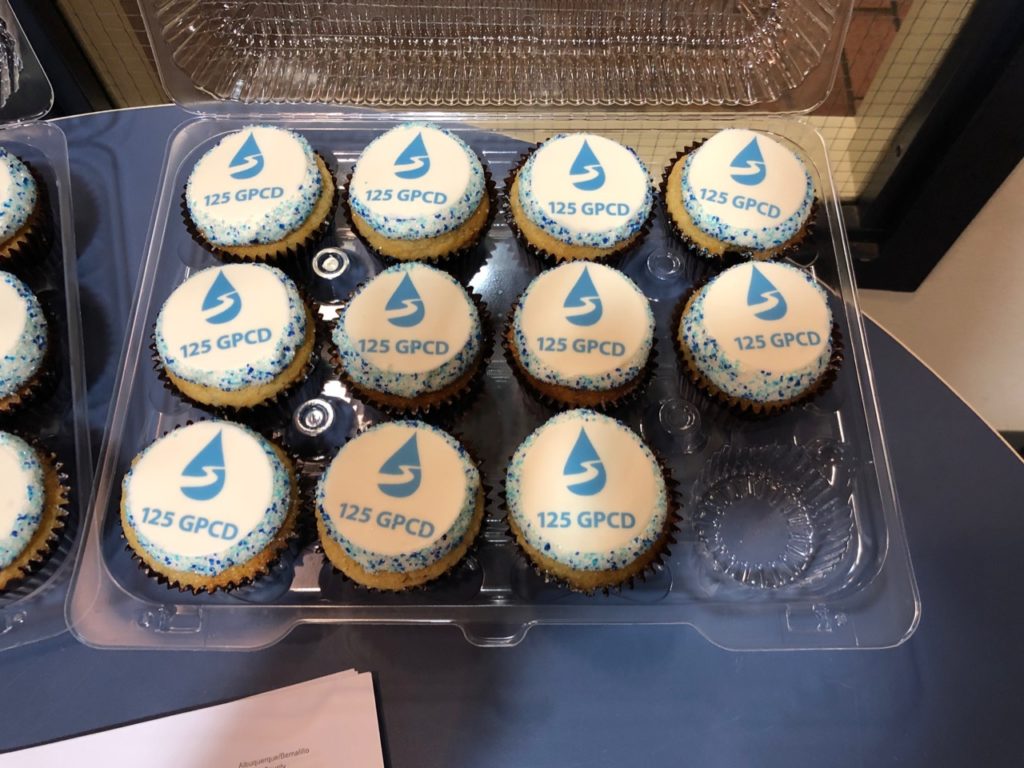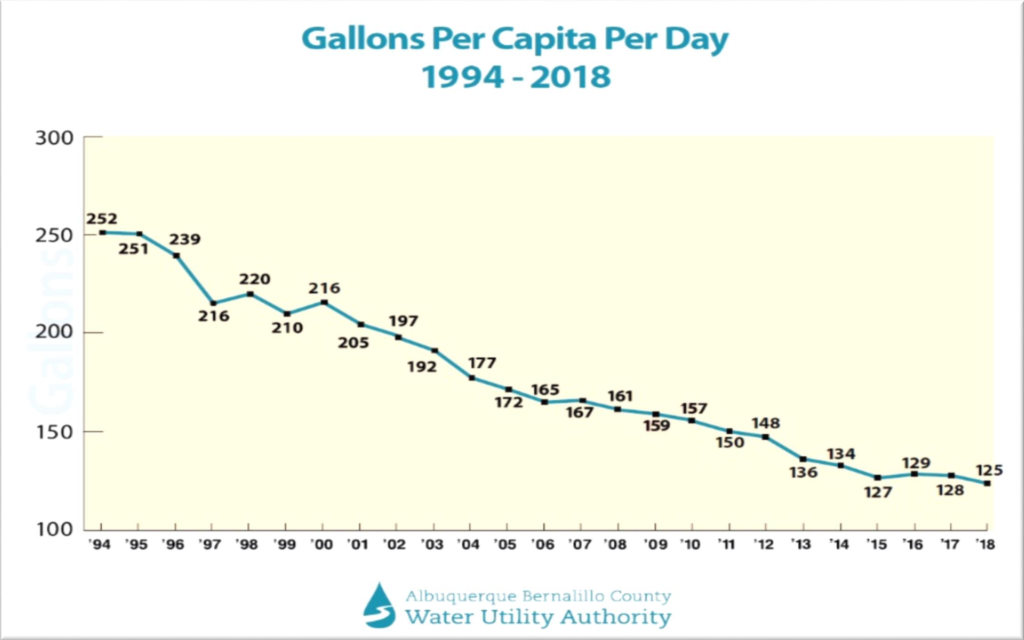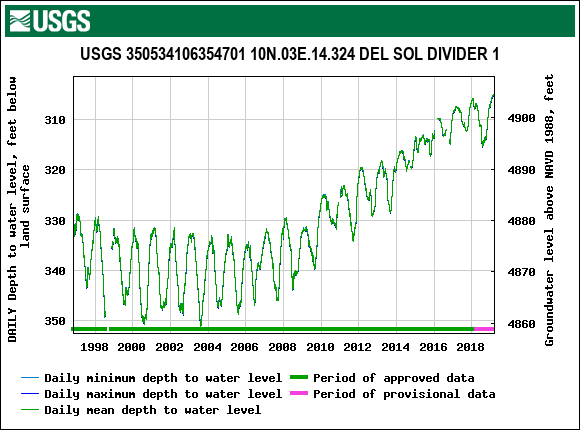
Albuquerque’s 125 gallons per capita per day cupcakes
Update based on questions on Twitter and in the comments: This number represents all Albuquerque municipal water use – residential, commercial, parks, system losses, etc. Frequently per capita usage numbers quoted are for residential use only, so beware apples-oranges comparisons.
Previously: There were cupcakes on a table by the door at the most recent meeting of the Albuquerque Bernalillo County Water Utility Authority: “125 GPCD”.
I have some schtick in my standard water talks: “Albuquerque has, since the mid-1990s, cut its per capita water use nearly in half.” That’s a pretty remarkable thing – a large community cutting its per capita use of a critical resource nearly in half, with no ill effects, in a bit more than two decades.
Now, I can drop the “nearly”. The 2018 numbers are in, and we’ve reached 125 gallons per capita per day.

Courtesy Carlos Bustos, ABCWUA
When I was covering this stuff for the newspaper, I was a skeptic. As I talk about in the first chapter of my last book, I was steeped in the “tragedy narrative” I learned from Marc Reisner and those who followed in his tradition. In fact, I was one of them:
Like many who manage, engineer, utilize, plan for, and write about western water today, I grew up with the expectation of catastrophe…. [A]s drought set in again across the Colorado River Basin in the first decade of the twenty-first century, I was forced to grapple with a contradiction: despite what had Reisner taught me, people’s faucets were still running. Their farms were not drying up. No city was left abandoned.
I didn’t talk about it in the book, but one of the keys for me was Albuquerque’s aquifer. As we pushed the conservation above – along with a significant supply shift to make use of our imported Colorado River water – our aquifer began to rise.

USGS groundwater measurements, Del Sol Divider, Albuquerque, New Mexico
Our water use is down, our aquifer is rising. And we’re still meeting our legal delivery obligations to Elephant Butte Reservoir under the Rio Grande Compact. The system is not only in balance, net storage here is going up.
I know, I know, past performance is no guarantee of future results. Things get harder, not easier, with a growing population and a warming climate. But we’re doing pretty well.
Have a cupcake.

125 from 250! California is now below 85.
The Bay Area closer to 65, SF around 40+.
2016 numbers. Water use has declined since then. https://lao.ca.gov/Publications/Report/3611.
You’ve got a ways to go. Lots of big lawns?
Chris – We of course envy those Bay Area numbers, but beware apples-to-oranges comparisons!
The numbers you’re citing are residential only. The 125 if total use. Apples to apples, our residential-only is ~75.
But yes, dense cities like San Francisco without outdoor landscaping, and suburbs in places where it isn’t the desert (the Bay Area gets three times the annual rain of Albuquerque), do have lower water use. More apt California comparisons are in Southern California, which has a more similar development pattern and a more similar climate. Total Southern California GPCD (the number comparable to our 125) is 167.
Why are the Texas lawyers, in the Texas v. New Mexico & Colorado litigation, interviewing (deposing?) a list of Albuquerque officials, beginning with John Stomp? Seems like that could be an interesting story.
Yep, and a once beautiful city where people enjoyed life and the yards were well kept is now a desolate dirt cesspool of crime and desperation. People hide in their homes and apartments or in homeless shanties instead of taking walks through nice neighborhoods. Trash, used syringes, diapers and run down homes and closed businesses instead of well kept yards. There is and always was plenty of water. Just a con job to raise rates has been implemented..
125? Let us know when you reach 80!
S.F. is at 41 I believe.
How am I leaving comments to a seemingly recent post, but dated March 2019. And I’m saying the same things? And yes S. Calif is higher than Albuquerque, probably because you guys value some desert type landscaping and S. Calif thinks it still should be an oasis: water flowing down the streets; green grass placed throughout industrial parks, malls — way beyond just residential lawns.